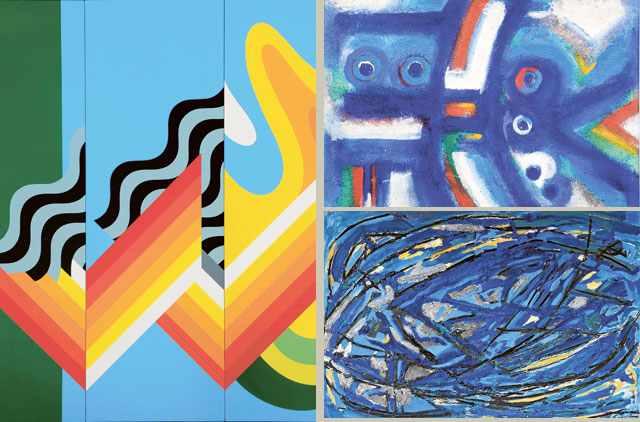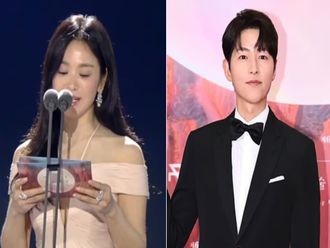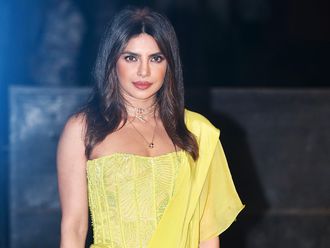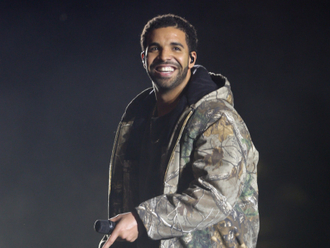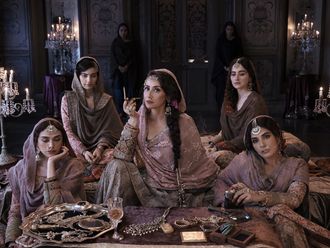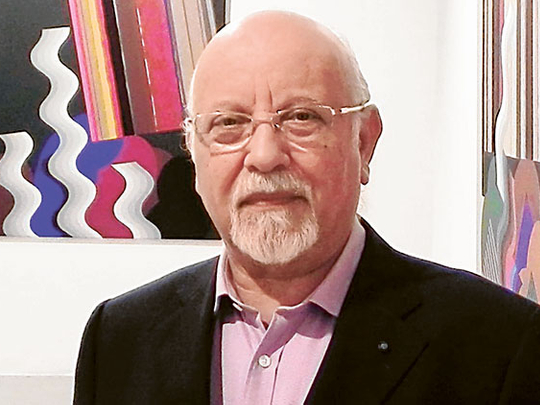
Meem Gallery is hosting the works of Moroccan artists Mohammad Melehi (born 1936), Ahmad Cherkaoui (1934-1967) and Jilali Gharbaoui (1930-1971). The exhibition features 14 paintings by Melehi — nine new and five old — and two each by Cherkaoui and Gharbaoui.
Melehi, known as "the master of modern painting" in Morocco, spent about 50 years establishing his inimitable style of lines and colours. His paintings contain secret symbols and hidden beauties, hovering between reality and the spirituality of abstraction. Melehi shared his thoughts on life and art with Weekend Review. Excerpts:
How many years have passed since your first exhibition?
Nearly 50 years. I participated in the first Venice Biennale in 1959, which was limited to artists under 30. At that appearance, my paintings drew the attention of European critics. Italian critic Lionello Venturi, in an article in the magazine L'Espresso, said that my paintings were a turning point in the history of my country's art. "We've got a surprise from Morocco," was the way he put it.
Are all your paintings focused on abstraction?
There are limits to abstract art: there is no abstract art that is 100 per cent so. Is abstraction a vision or a perception? This is difficult for a writer to explain, since lines and colours are usually not relevant to the nature of the human memory. I may describe my art as abstract, since it is not related to the body of a human being or a natural element. Abstract work carries its own nature, and it can be structural art or a synthesis. The regional artist lives between two heritages: Arab-Islamic cultural heritage that has a psychological aspect, carried inside the artist until his death, and his global inheritance and the influence of the universal civilisation. Personally, I belong to the two heritages, like other artists including Fateh Al Moudarres, Louay Kayali, Adam Hanin, Dia Azzawi and Shakir Hassan Al Said. All of them drank from the waters of the West, and they are also the product of a double inheritance. This duality is present in contemporary Arab art.
What about calligraphic artists in the Arab world or the "Hurofeen"? Do they also have this duality of inheritance?
The particularity of Arabic art is that it contains two messages: First, that of the figure, shape, a painting, or a piece maybe, of furniture. This is what broke the concept of traditional Islamic Art, which was formerly confined to a building or the decoration of pots.
Let's look at the artist Wasti and his employment of a visual language that lives up to the scientific interpretation of plants and medicine. He can be compared to the artist El Greco, who drew the picture called Burial, where we see armies carrying spears painted like stringed musical instruments, walking left or right. Wasti painted the legs and heads of camels in a poetic manner. He was not a historian but an artist. But the spectator passes by in transit in front of the painting, because it needs an understanding of the artistic alphabet in order to find its inner meaning.
How do you see contemporary Moroccan art, and the extent of its interaction with local realities and global art making?
Everyone knows that Morocco is part of the finest civilisations that existed on Earth, a civilisation of Andalusia, in addition to the accumulation of other civilisations, whether in food, clothing or taste. This aspect makes it a singular phenomenon in the Arab world, due to its distinguished heritage. There is another particularity, in that Morocco did not taste the Ottoman fruit. Even when Moroccan art is decorative, we notice it is free from Ottoman lines and designs. The Iranian, Afghan and Turkish carpets contain flowers, veins of stems and thrones; but the Moroccan carpet remains more geometric.
For example, Berber carpets contain a mixture of colours and lines without limitations of geography. A rural maker of carpets creates a piece of spontaneous art. This is why it drew the interest of the Swiss artist Paul Klee, whose grandmother was a Tunisian. He was inspired by the colours of Moroccan rugs.
In Morocco, Delacroix intended to reproduce the colours of the sun ...
That is true. Delacroix was known for his paintings of Islamic clothing in Morocco. Van Gogh was another master who was surprised by the sunflower. So we come to the pillars of art: El Greco, Wasti, Paul Klee, Delacroix and Van Gogh. If we look carefully at their artistic inspiration, we can understand art in its glorious mixture and diversity.
Do you paint on a unified idea for one exhibition?
Yes. I have painted my recent pictures for Meem Gallery in Dubai on the basis of a unified idea, specifically for this ongoing exhibition.
What do you think of today's young painters?
Young artists are trying to mark their presence by using tools and various techniques and curious experiments. This is normal. When I was young, I sought to impose myself. Now I work in my corner quietly. I feel innovation lies in the heart of the artist, as it is in all fields. For example, Adonis now does not need to look like a revolutionary poet. That has been done away with. But he must continue burning the creative flame; otherwise, he will die. In Art Dubai, for example, there were more than 30 countries and various artistic works, some acceptable, others confused, based on violent and sudden renewals. The commercial marketing of art has become an important factor.
What has been your relationship with calligraphic painters, the "Horofeen", from early days until now?
The period of "Horofeen" in Arab art has played the role of a bridge in spreading ideas. Arabs did not have something called art before. They acted intelligently and put Arabic calligraphy along with Chinese or Japanese calligraphy. Why? Because the Western critic became interested in Asiatic art, especially Chinese calligraphy, since it gave an aesthetic dimension to painting along with a fluid vision.
One-dimensional calligraphic groups rode this wave through the imposition of the Arabic calligraphy, parallel to the Chinese. Engagement with Oriental art took place after the Iraqi artist Shakir Hassan Al Said. This period has had implications for a group of Moroccan artists in the Eighties such as Mackie Magara, Abdullah Al Hariri and myself. I used the word "God" in some of my paintings, and one of them was hung at the airport in Jeddah, but I had painted this word in an innovative way. Also, Iranian artists, the Tunisian Naja Al Mahdawi and Western artists have all used Arabic calligraphy.
After 50 years, do you still feel that you have something to say in your paintings?
I am one of the artists who do not feel a creative crisis or face a "painter's block", but suffer from a crisis of time. I paint almost every day because I am subjected to the market's pressures. People in Morocco have started investment in art. In general, investment in art among Arabs is a new trend. I would say it exists in all forms of art now. Plus, an artist has to market himself. I have to attend a new exhibition next May!
Which is the most expensive piece of art you have created?
Centre Pompidou Museum in Paris bought one of my paintings for €70,000 (Dh343,323). It is now showcased in the museum. I have built a monument for the entrance of Rabat city, up at about 18 metres, at a cost of €120,000.
Shakir Noori is a writer based a Dubai.
Art Morocco: Mohammad Melehi, Ahmad Cherkaoui and Jilali Gharbaoui will run at Meem Gallery, Dubai, until April 30.


